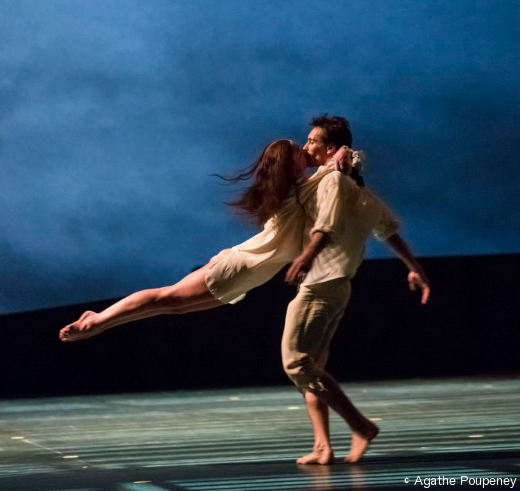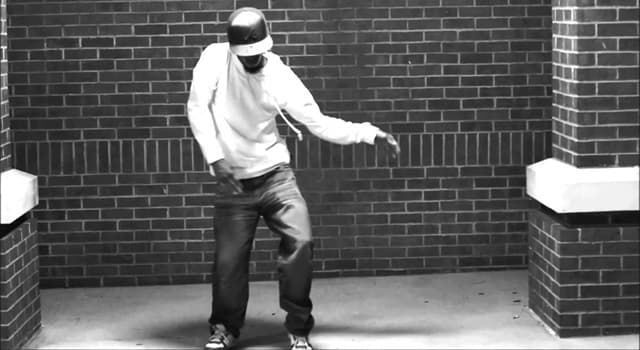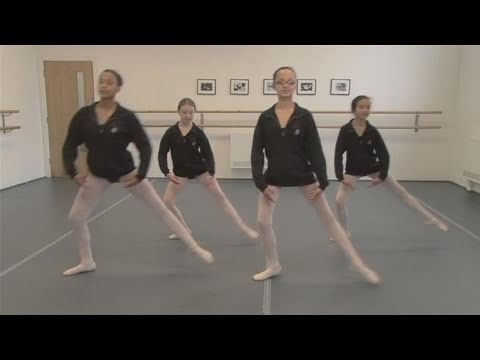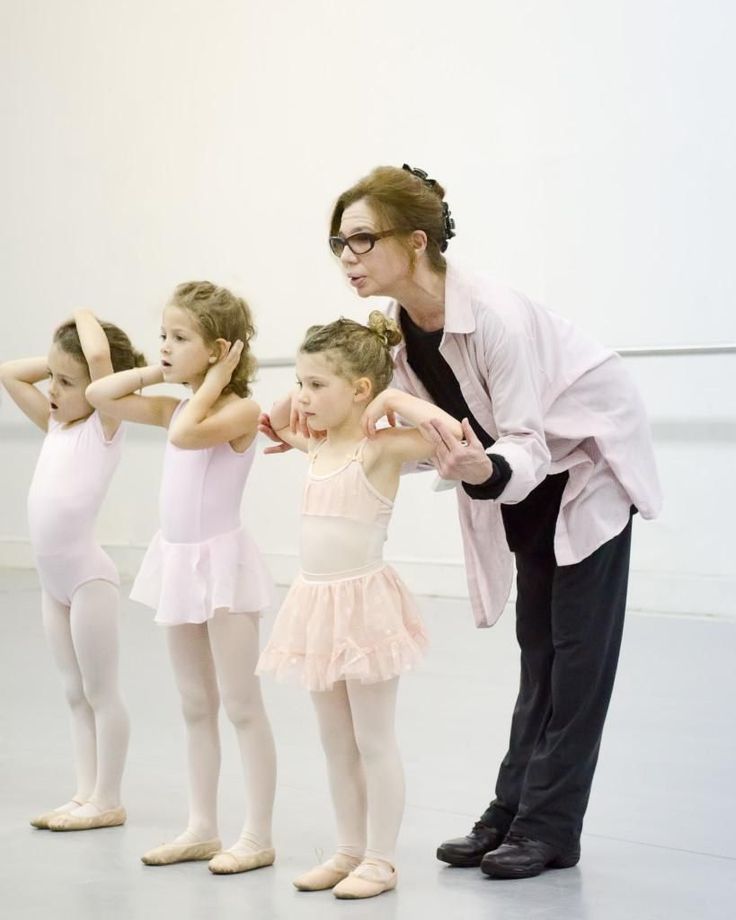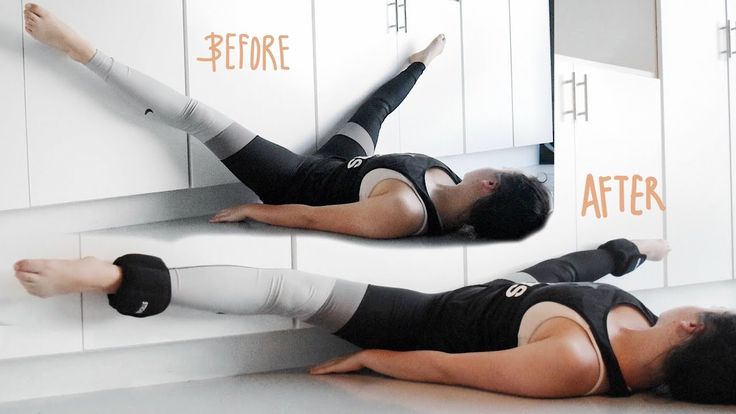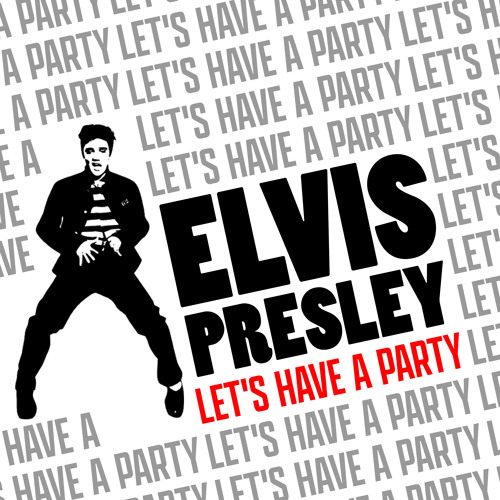How to get your jumps higher for dance
Improving Your Jumps — A Dancer's Life
Amber wears the Violet Crop Top and Camilla Short in Nightfall.
We all dream about doing a super high grand jeté. Having the audience be in awe of the moment you appear to be floating in the air. Not only does it look amazing, it also feels amazing to watch (and do!). But how do we get our jumps to look and feel like that? Despite spending years working on our jumps, sometimes it feels like we aren’t making the progress we need or want to make. Luckily jumps are one of those things where there’s always something we can improve upon. In order to make your jumps go from a ‘leap frog’ to more of a ‘leaping jeté’, we’ve provided five key areas to focus on so you too can be soaring through the air, having the audience marvel at the height and grace you exude.
To give you that extra dose of inspiration, we have the lovely Amber showcasing the recent Nightfall Collection, proving that jumps can be practiced both in and out of the studio!
Amber wears the Kira Crop Top and Emily Short in Deep Ink.
Flexibility
Flexibility is important for your jumps. If you want to achieve a split in the air you first need to be able to do it on the ground. Daily stretching will improve your flexibility, enhancing the line of your jumps. But don’t overdo how much you are doing each day. When it comes to stretching ensure that your body is warm before you go straight into a split. Start by doing some gentle stretches like bending forward to reach your toes, spinal twists on the ground or pulling your knees to your chest to start getting the blood flowing. Once your body starts to feel a bit warmer you can start attempting more intense stretches including hip openers, hamstring stretches, centre, left, and right splits. Progressing slowly through your stretches doesn’t mean you aren’t making any progress with your flexibility. Your flexibility will still improve and you’ll also prevent any muscular strains or injuries. Remember, Rome wasn’t built in a day!
Amber wears the Riley Crop in Deep Ink and the Bailey Legging in Nightfall.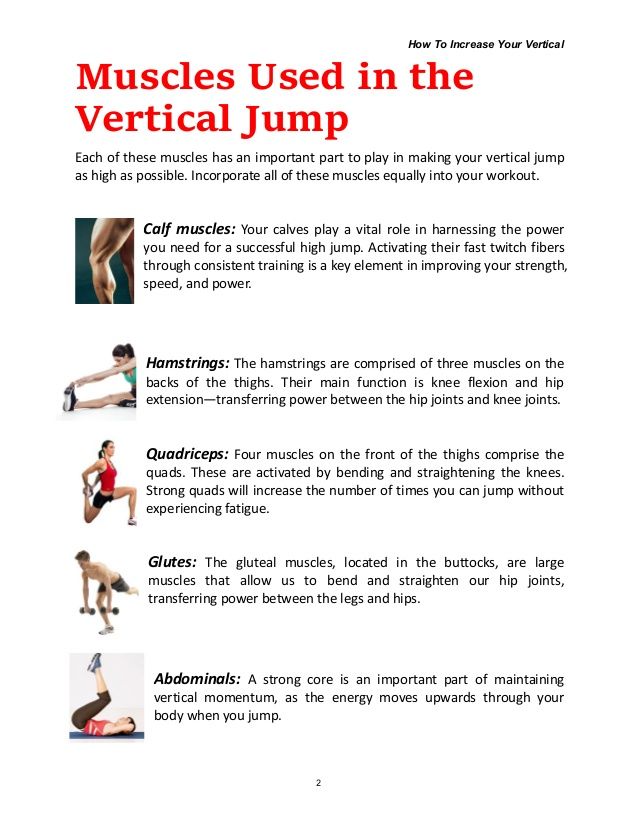
Plié Deeper
Plié’s are the underlying foundation for most dance movements. They start and end almost all steps in ballet, are the initiation of nearly every turn, and are a must for the take off and landing of every good jump. A deep plié is important for achieving the height you need to execute a jump. The deeper the plié, the more power you’ll have in your legs to push off the ground. When jumping off the ground think ‘heel, ball, toe’, like rising up to demi pointe. This is not only essential for power, but also for ensuring you have a nice point for the jump you are attempting. Regardless of how many steps you take to prepare for the jump, make sure you really bend your knees to gain as much strength as you can. Bending and straightening the knees doesn’t seem that hard but plié’s are a powering movement that help protect the body from injury and give you the ability to jump with ease.
Amber wears the Violet Crop Top and Billie Legging in Deep Ink from the Nightfall Collection.
Control The Landing
What goes up must come down! A jump isn’t complete until it’s landed safely. As soon as your feet leave the ground you should begin to think about your landing. Try to hit the floor as softly and quietly as possible and never come out of a jump with straight knees as it will almost always cause injury. If landings feel like your weak spot, practice jumps holding on to the barre. This way you can use your arms to help control the descent. Think of landing ‘toe, ball, heel’ - the opposite of what you do when taking off. Articulating the feet is not only essential to the take off of a jump but for the landing as well. Maintaining alignment when landing is also crucial to avoid that crumpling down appearance. Feel as though you’re being lifted from the top of your head throughout the entire duration of the jump.
Amber wears the Violet Crop Top and Camilla Short in Nightfall.
Breathe
Sometimes when we are executing a movement that’s a bit more difficult we start to hold our breath. While we may think this is making things easier, it’s actually making it a lot harder. Holding your breath prevents the circulation of oxygen. This reduces what gets delivered to the muscles, making them fatigue at a faster rate and increasing the build up of lactic acid - causing those heavy legs we can sometimes get at the end of a hard class! To prevent this from happening be aware of your breath when you are jumping. Awareness of your breath will not only improve the circulation of oxygen, it will also improve the height of the jump and help release excess tension. If you take a deep breath at the peak of your jump, it can also make it seem like you’re soaring through the air. Decide whether you prefer exhaling on the jump or on the landing and do what works best for you.
While we may think this is making things easier, it’s actually making it a lot harder. Holding your breath prevents the circulation of oxygen. This reduces what gets delivered to the muscles, making them fatigue at a faster rate and increasing the build up of lactic acid - causing those heavy legs we can sometimes get at the end of a hard class! To prevent this from happening be aware of your breath when you are jumping. Awareness of your breath will not only improve the circulation of oxygen, it will also improve the height of the jump and help release excess tension. If you take a deep breath at the peak of your jump, it can also make it seem like you’re soaring through the air. Decide whether you prefer exhaling on the jump or on the landing and do what works best for you.
Amber wears the Julia Crop Top and the Bailey Legging in Deep Ink.
Strength
Incorporating strength training isn’t meant to make you stiff like a pogo stick when jumping.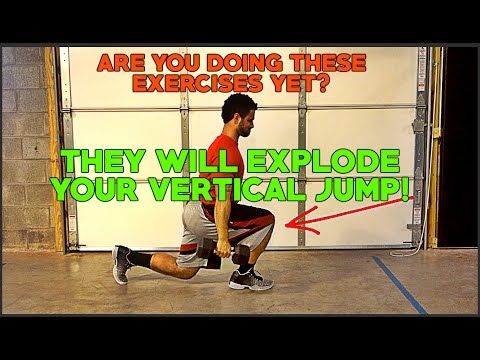 It’s intended to improve the execution and aesthetic of jumps and prevent the onset of injuries. Good core strength and alignment are crucial to almost all aspects of dance, but especially with jumps. By performing repetitive movements such as sit ups, mountain climbers or supine toe taps to work on your core, you’ll gradually be able to build up the strength that will support you when you are jumping. Having a strong core allows the rest of the body to stay connected without the added tension. Strength work also includes working on your glutes and legs. Improving the strength of these areas will further enhance your jumps and assist with the execution as they do a lot of the work when it comes to jumping. Think of doing pilates leg circles, bridges and ‘swimmers’ (when you lay on your stomach and kick your arms and legs like you’re swimming) to strengthen your glutes and legs.
It’s intended to improve the execution and aesthetic of jumps and prevent the onset of injuries. Good core strength and alignment are crucial to almost all aspects of dance, but especially with jumps. By performing repetitive movements such as sit ups, mountain climbers or supine toe taps to work on your core, you’ll gradually be able to build up the strength that will support you when you are jumping. Having a strong core allows the rest of the body to stay connected without the added tension. Strength work also includes working on your glutes and legs. Improving the strength of these areas will further enhance your jumps and assist with the execution as they do a lot of the work when it comes to jumping. Think of doing pilates leg circles, bridges and ‘swimmers’ (when you lay on your stomach and kick your arms and legs like you’re swimming) to strengthen your glutes and legs.
Amber wears the Bianca Leotard in Nightfall.
When it comes to jumps (as with most aspects of dance) we are always striving for perfection. However, perfection isn’t always a realistic goal because let’s face it, no one is perfect! When practicing and performing jumps try not to be too hard on yourself. It’s okay if things don’t go exactly as you intended. As long as you can still learn something from it (even if it’s not what to do!) you are still improving and growing. Think back to where you were, where you are now, and how much you have improved. Sometimes we need a little check in to appreciate all of our hard work!
Shop the Nightfall Collection here
If you want to follow Amber’s dance journey, you can watch her adventures unfold on Instagram: @amber_mya_
Article by Sheree Ronai-Horvath
Photography by Elly Ford
Read More:
Ballet 101: The art of Pirouettes
Technique 101: The art of Ballet Hands
So you want to be flexible…
Dance Advice, Advice + TipsEnergetiksNightfall, Amber Mya, Dance 101, improving jumps, Plie, stretching, Breathe, landing, strength, Sheree Ronai-Horvath, Elly FordComment
0 Likes5 Tips that Will Guarantee You Increase the Height of Your Jumps
Many athletes use jumps and leaps in their athletic performances, but dancers are among the various athletes that make it look graceful.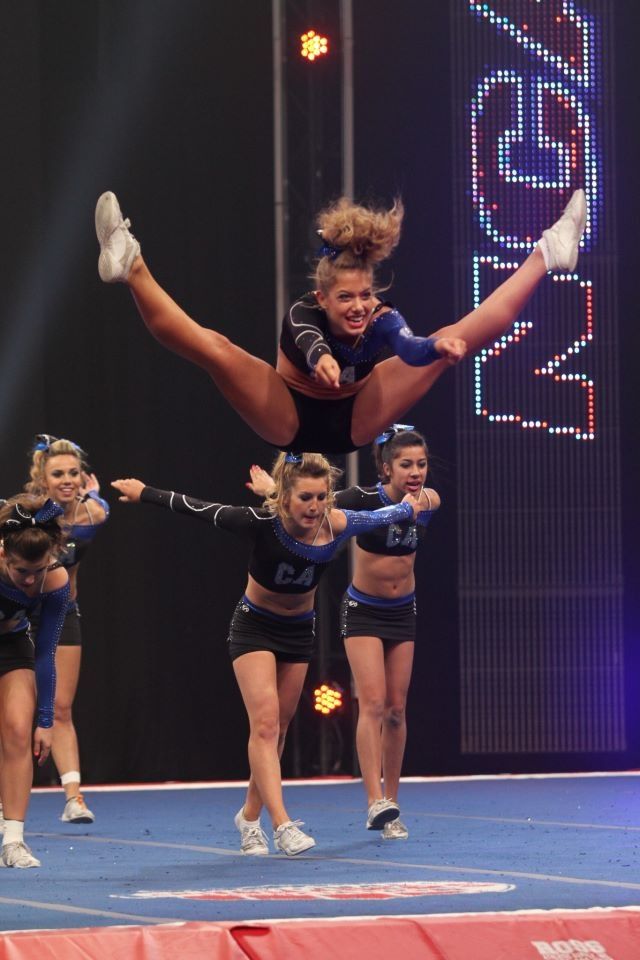 Grace is earned in the early practices of the morning, until the late hours of the afternoon. Dancers are constantly striving to achieve the “look” of effortlessness, however, it can only be taught through countless hours of practice.
Grace is earned in the early practices of the morning, until the late hours of the afternoon. Dancers are constantly striving to achieve the “look” of effortlessness, however, it can only be taught through countless hours of practice.
Here are some pointers for increasing the height of your jumps and leaps.
- Videotape Yourself
- Use Imagery
- Whole Body Experience
- Back To The Barre
- Stretch & Strengthen
Okay let's unpack each one of these five tips.
Videotape YourselfIn today’s technological age, dancers can benefit greatly from things such as slow-motion video. Before you start working on increasing the height of your jumps, take time to videotape yourself. When going over the video, focus on your take off, and the position of your torso.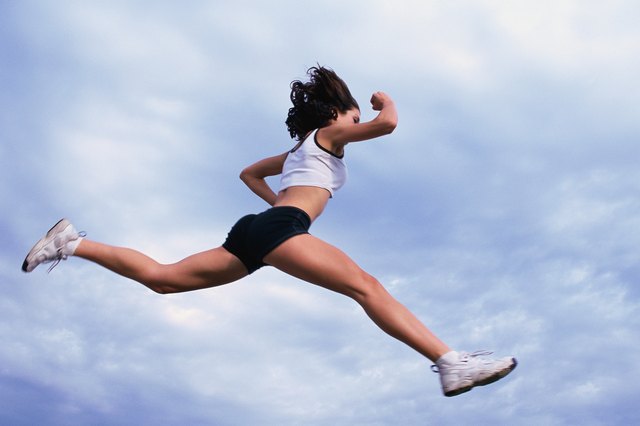 Once reviewing the video, determine the part of the leap you would like to focus your energy on.
Once reviewing the video, determine the part of the leap you would like to focus your energy on.
While it may seem odd, positive imagery and positive self-talk do wonders for performance. Find a relaxing place, and close your eyes. Invision yourself leaping through the air. Concentrate on your take-off, arm and leg position, and even the landing.
Whole Body ExperienceIt is important to recognize that jumps, and leaps require more than just leg strength. While leaping, focus on where your eye-contact is. Instead of looking straight-forward, slightly angle your head and focus upward. Also, be conscious of your arm position.
Ask yourself this:
- Are your arms straight?
- Are your shoulders relaxed and pulled down?
- Is your torso upright?
- Are your toes pointed?
Your posture and plié are two key concepts to consider while increasing the height of your jumps. This can best be accomplished inside the walls of a ballet class. By correcting your posture (lifting) and deepening your plié, your jumps will increase in height due to potential energy.
This can best be accomplished inside the walls of a ballet class. By correcting your posture (lifting) and deepening your plié, your jumps will increase in height due to potential energy.
Insider tip: When working on petit allegro jumps, use the barre to support your weight. This will provide more air time to focus on mastering the footwork.
Stretch & StrengthenStretching and strengthening are required for beautiful leaps. Working on your splits, practicing dynamic stretching, and doing static stretching, will all help in benefiting your flexibility.
To increase strength: Add repetitions of tuck jumps, high skips, and high knees into your morning warm ups. Also, consider incorporating plyometrics into your workouts.
Dance School - Balance Club
25 August 2016
The most significant aspects of any dance direction, of course, are all sorts of jumps and hops. Jumps , as a kind of dance movements, are the most spectacular - they give the dance high dynamics, giving the audience a feeling of lightness and airiness. Some dancers are truly born jumpers, others go to great lengths to develop the ability to jump high and, most importantly, easily. Be that as it may, every dancer who counts on the title of a professional must constantly improve the technique of his jumps, replenishing it with new, more complex elements.
Jumps , as a kind of dance movements, are the most spectacular - they give the dance high dynamics, giving the audience a feeling of lightness and airiness. Some dancers are truly born jumpers, others go to great lengths to develop the ability to jump high and, most importantly, easily. Be that as it may, every dancer who counts on the title of a professional must constantly improve the technique of his jumps, replenishing it with new, more complex elements.
In any dance style, be it Classical or Jazz Modern, Break Dance or Hip Hop, there is a wide variety of jumps and jumps that are the most difficult part of any dance technique. And, despite the fact that the jumps of different dance styles are not always similar to each other, basic exercises and techniques for preparing for them can be used in any style. There are several tricks that will help you improve your jumps. First of all, it is necessary to develop the power of the push, which will allow you to make a high jump, sufficient to perform the desired figure in flight and fix it for as long as possible.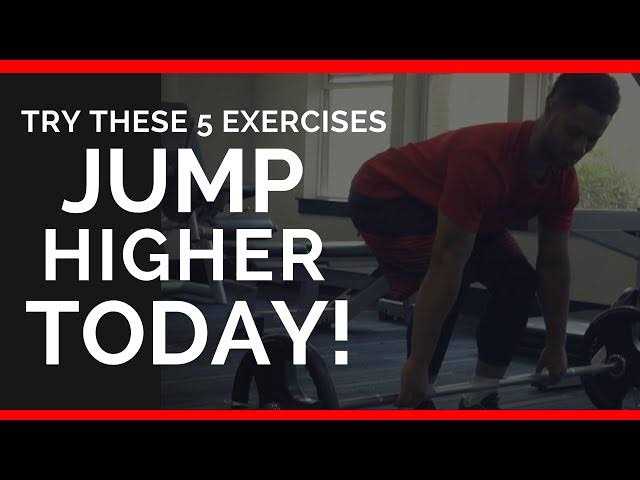 In this article, the Balance Club Dance School provides some recommendations. By following them, you can develop your ability easily, dynamically and jump high .
In this article, the Balance Club Dance School provides some recommendations. By following them, you can develop your ability easily, dynamically and jump high .
Raise your weight! The best dancers in the world use various exercises in their training to lift their bodies up. Raises on toes with extended knees, lunges on one leg, and all sorts of squats are the best exercises that any dancer can do to improve their jumps. Find time in your classes for these exercises and soon you will begin to literally soar in the air like never before!
Work on your stretch! Stretch your calf muscles, hamstrings, and quads after each session: a dancer with flexible legs will be able to jump higher. If you are doing splits, try putting something under your front leg (like a rolled up mat). This is a good and safe way to improve your longitudinal split, which will add ease during the performance of jumps with open legs in flight.
Soften your landing! When learning to dance from scratch, before moving on to learning the jumps themselves, they learn the rules of landing. This is done because most of the injuries when performing jumps are due to improper landing. And an injury, as you know, can ruin not only the career of a professional dancer, but also bring a lot of trouble to a simple amateur. Even after a small jump, land only on tense legs, softening the landing with a springy plié. A dancer who regularly develops a deep plie performs more airy and graceful jumps, and is less likely to be injured when landing. Plie is an extremely important exercise for the dancer's health! Infrequent use of plie in your training can lead to underdevelopment of the tissues of the tendons of the ankle joints, hamstrings and weakness of the foot.
This is done because most of the injuries when performing jumps are due to improper landing. And an injury, as you know, can ruin not only the career of a professional dancer, but also bring a lot of trouble to a simple amateur. Even after a small jump, land only on tense legs, softening the landing with a springy plié. A dancer who regularly develops a deep plie performs more airy and graceful jumps, and is less likely to be injured when landing. Plie is an extremely important exercise for the dancer's health! Infrequent use of plie in your training can lead to underdevelopment of the tissues of the tendons of the ankle joints, hamstrings and weakness of the foot.
Stretch up! When performing in the jump and landing, keep your head high and your back extended - this will lighten your weight. Many dancers get distracted trying to see themselves in the mirror instead of stretching out and enjoying the feeling of flying.
Use vitamins! The bones, muscles and tendons of a dancer need a sufficient amount of vitamins and trace elements. And therefore it is better to optimally enrich your diet with essential vitamins.
And therefore it is better to optimally enrich your diet with essential vitamins.
But the most useful advice that can be given to those who want to learn how to jump is that you must constantly believe in yourself, believe that you can fly! If the dancer keeps in his mind the feeling of flying high and the belief that he can soar easily and high, he will most likely be able to make a higher jump. This belief must begin long before the actual jump, persist throughout the flight, and not disappear after landing. The dancer who believes in jumping literally gains wings!!!
We are waiting for you at our lessons and happy flights!!!
Dance school in MoscowBalance Club.
Prospect Vernadsky, 95, building 4
Tel. +7 (495) 434 0550
How to learn to jump high? - Sport Collection
Higher! Farther! Faster! - the motto of any athlete. Not a single victory is possible without this attitude, but today we will talk about “ABOVE!” About the dream of many athletes to have good jumping ability, because not everyone has this talent, but many people are interested in whether hard training can achieve high jumps. This goal can be faced by both amateur athletes and professional athletes who must master the high jump in order to achieve long-awaited victories.
This goal can be faced by both amateur athletes and professional athletes who must master the high jump in order to achieve long-awaited victories.
The ability to jump high, while controlling its body, is required in such sports as:
- Basketball
- Ski Sports
- Snowboarding
- Jumping
- Skaytboarding
- Skaytkding
- parkour
- acrobatics
- choreography
- extreme sports
- figure skating
- volleyball
- gymnastics
- dancing
And this is not the whole list of sports where jumping ability is needed as an additional skill.
How to learn to jump high?
High jump is a great physical activity, so the development of such a skill should be approached seriously and under the guidance of a person who understands how it is done. Proper strength training, systematic exercises and rational load distribution will help everyone master the technique, but it is important to understand that this will take time, which means perseverance and patience. The main thing is to know that the goal is achievable and competently move towards it.
The main thing is to know that the goal is achievable and competently move towards it.
The development of jumping from a vertical position develops coordination, strengthens muscles, which makes the athlete better control his body, his endurance grows. Any jumper knows how to land correctly from different heights, which is always useful not only in sports.
The jump mechanism consists of the following phases:
- takeoff run
- preparation for the push from the ground
- repulsion
- flight
- landing
What muscles work when jumping?
Physical fitness in general is the key to successful training, you can not work only with the muscles of the legs, for example, while having a flaccid shoulder girdle.
Calves
The calf muscles should be developed for a strong push from the surface, as well as to prevent various injuries.
Ankles, feet and ankles
They have a very serious load during the run-up and especially landing, so these fragile areas of the legs should be strengthened by gymnastics and be sure to warm them up before training. This will help avoid injury.
Knees
Considered to be one of the most fragile places during jumps, so you should not only learn how to land correctly and safely, but also strengthen your knees by doing special exercises.
Muscles of the thighs and buttocks
The development of these muscles will help you make a good run-up and a powerful push. The anterior thigh muscle helps to throw the body up, which means that a lot of attention is paid to strengthening it.
Experts advise starting such classes, preferably with an experienced trainer, but if you decide to do it yourself, then listen to our advice.
1) Safety
Do not start training on a concrete floor or grass without elbow and knee shock absorbers. For jumping at the initial stage, mats or tatami are well suited to prevent injury during falls.
For jumping at the initial stage, mats or tatami are well suited to prevent injury during falls.
2) Complete warm-up
Muscles and joints must be thoroughly warmed up and stretched to be ready for a big load.
3) Regularity of training
Classes should be with a gradual load.
The best exercises for developing jumping ability
There are many developed techniques for developing jumping ability, but many consider the box or platform jump to be one of the most effective exercises. This helps to jump high without a run-up and strengthens the muscles of the legs. I must say that the first time not everyone succeeds in jumping onto the box from a place, especially if it is high. The main thing is not to despair, but try to take a lower platform, master the jump, and then gradually increase the height. For those who are unable to push off from a place, you can start with a small take-off, which we gradually begin to reduce. After such a workout, be sure to give the muscles a rest and do not forget about stretching to relax the muscles.
After such a workout, be sure to give the muscles a rest and do not forget about stretching to relax the muscles.
Landing is an important part of the jump, because it is at this stage that you can get injured if you do not follow the technique.
And it consists in landing on soft, bent at the knees legs, as if springing them, when jumping from a great height, you can squat down. Straight, tense legs, and the same body are unacceptable during landing. The torso is tilted at a 45° angle, the legs are bent at the knees, the toes are pulled down because the landing starts on the toes, then the heel drops. Hands should be put forward a little.
Training program
Stage one - jumping rope.
250-300 jumps, non-stop and fast.
Such jumps develop breathing, strengthen all the necessary muscles and joints.
To increase the load over time, you can perform jumps with weight and with a lot of jumps.
Stage two - squats
These exercises are best done with weight, it can be a backpack with a load or a barbell on the shoulders. You need to perform 10-15 squats, 5-7 approaches with breaks of several minutes. This exercise perfectly develops all the leg muscles necessary for high jumps.
Step three - calf raises
Raise your toes as high as you can and gently lower your entire foot. You need to repeat from 20 to 50 times, until burning in the calves.
Fourth stage - jumping
You can perform this exercise in different ways - jumping on a box or platform, or high jumps to any goal (basketball basket or a ball suspended from a tree) You can jump from different takeoffs - from 10 to 5 steps, pushing off with one and two feet.
How often do you practice?
The optimal frequency of training is two or three times a week, the duration of the session is 1.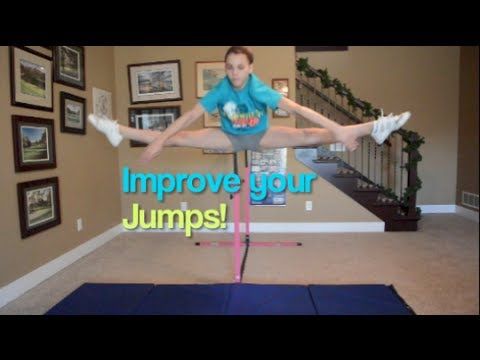 5-2 hours.
5-2 hours.
Do not exercise every day, so that there is no great burden on the body. To begin with, all exercises should be performed at an average pace, within your own physical capabilities.
From session to session, the number of approaches and repetitions will increase, the observance of gradualness in any training leads to the expected result.
Training equipment
- knee pads, elbow pads
- weights - special belts and sandbags for legs and arms, or a backpack with something heavy stable box
Psychological aspect
Sports psychologists explain to athletes how important the mental attitude is before any training in order to achieve their goals. It is important to clearly visualize in your imagination all the stages of the jump in detail: run, muscle tension, upward impulse, landing. The fact is that a vivid representation of physical activity in the imagination contributes to the work of the muscles of the body in reality, and greatly contributes to strengthening not only the will of the athlete, but also physical strength.


